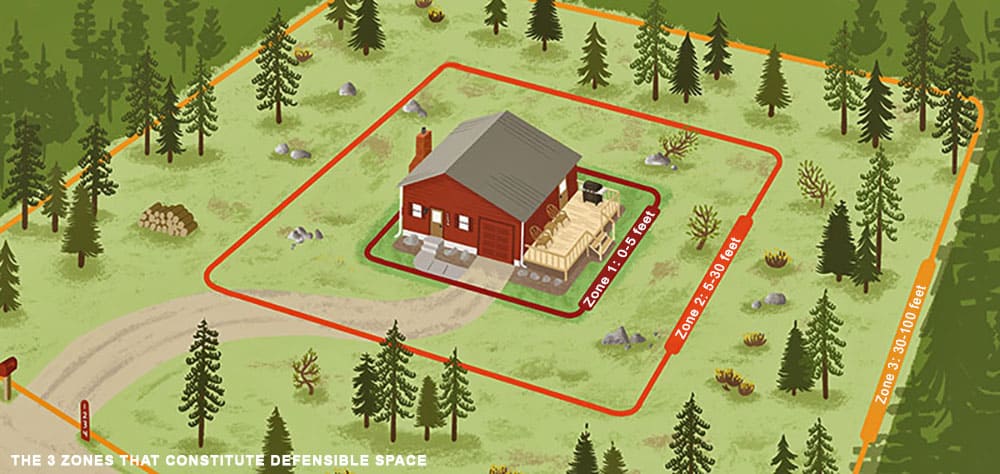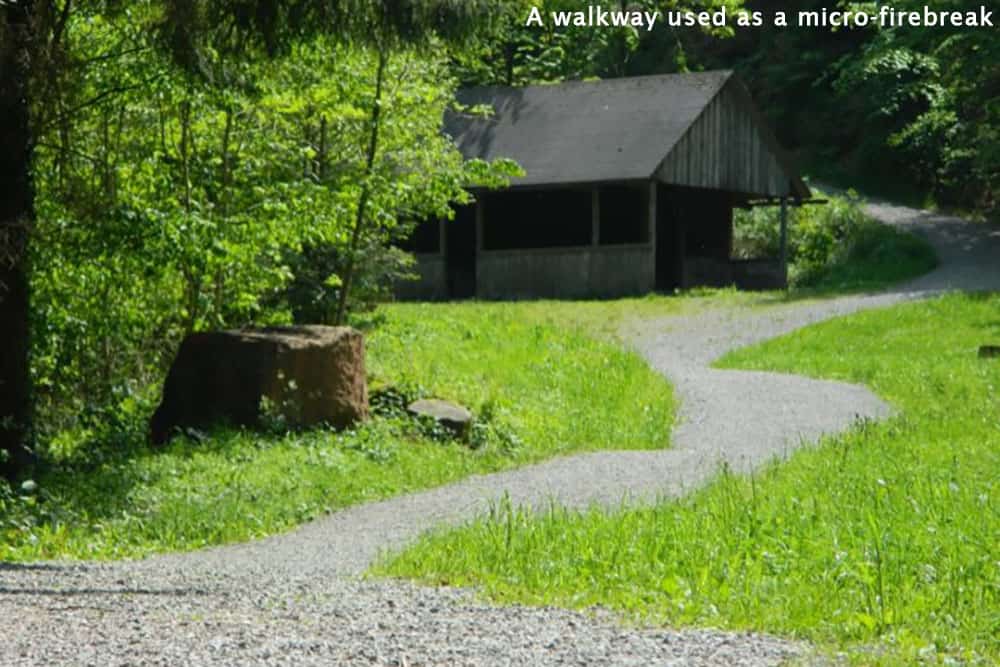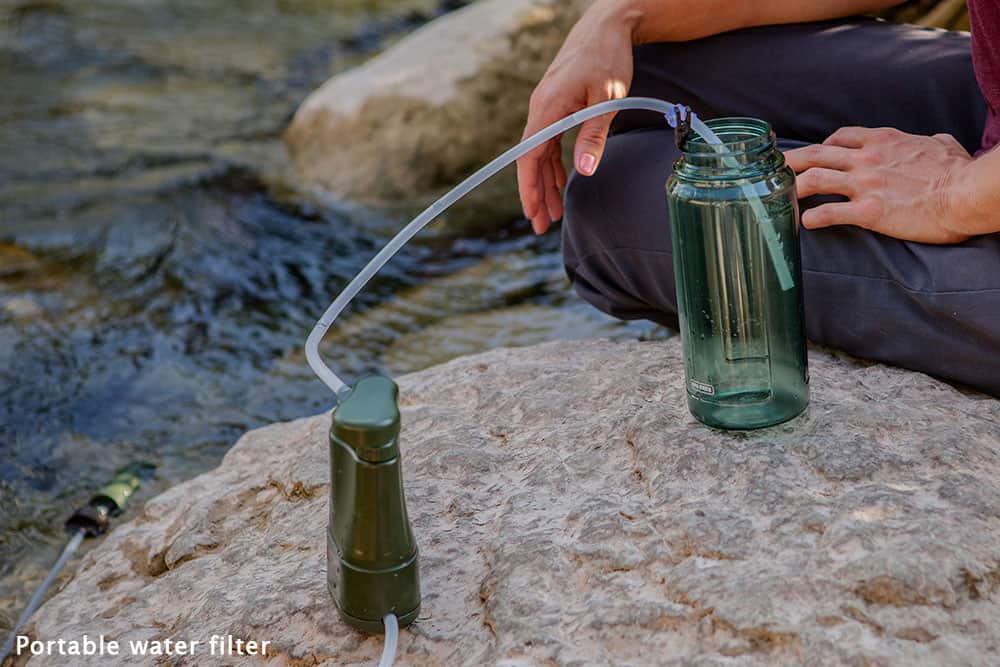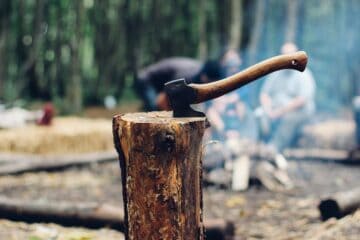The past 5 years have seen story after story of wildfires sweeping through residential areas of the west and southwest conjuring images straight out of hell, causing billions of dollar of damage and killing and injuring scores of people.
The images coming out of states like California have sparked a national debate with some putting the blame for the fires on climate change, others blaming poor forest management and still others pointing out that in the past 100 years California’s population has grown from 3.4 million to 39.5 million, suggesting the fires aren’t coming to us, we’re going to the fires.
But while well-intentioned people can debate the cause none of it matters when a wildfire sweeps over a ridge and descends on your home. When that happens the only thing that really matters is your level of preparedness. And that’s what we’re here to discuss today: how to prep for a wildfire.
The need for preparedness
It doesn’t take long for a wildfire to become an existential crisis. You could leave your home in the morning with everything seemingly fine and return after work to discover your home and loved ones in mortal danger.
Wildfires have numerous causes ranging from lightning to accidents to arson, and they can be capricious, destroying homes on one side of a street and leaving the other side largely untouched.
A common thread, though, among those whose homes and families emerge unscathed is preparedness. The fact is, you can greatly reduce the chances of losing everything to a wildfire by taking the following tips to heart.
Creating a defensible space
Fires choose the path of least resistance in their search for fuel, which is why firebreaks (1) are such an important tool in fighting wildfires. This basic firefighting principle can be applied to your property by creating what is known as “defensible space” around your home.
It’s recommended that you have 100 feet of defensible space around your home in order to reduce the odds of embers, direct flames or radiant heat causing your home to catch fire. This kind of defensible space also gives firefighters plenty of room to set up as they attempt to defend your home from the onrushing conflagration.
The 3 zones that constitute defensible space
Most fire prevention experts divide defensible space into 3 distinct zones. They are the immediate zone, the intermediate zone and the extended zone.
The immediate zone
The immediate zone encompasses the house itself as well as a 5’ perimeter around the house. This area, including the house, is the most vulnerable to embers. So if you do nothing else you should implement whichever of the following tips you are able to in order to give your home a fighting chance against a wildfire.
- Ideally you would replace any combustible materials on the roof with non-combustible materials. That means removing asphalt or wooden shingles and replacing them with clay, ceramic or even concrete tiles. You could also install metal roofing (2) which is both fireproof and impervious to insect damage.
- If it is not financially or practically possible to replace the roof you should inspect the roof you have and replace any damaged or missing shingles, as holes could allow embers to penetrate. In addition, eaves and soffits around the perimeter of the roof should be boxed in if they are not already. These “boxes” should be made of non-combustible material, not wood.
- If you currently have box eaves and they contain vents chances are those vents have openings large enough to allow embers through. Replace those vents with 1/8 to 1/16 inch metal mesh screening. This will help prevent embers from entering the space under the roof and sparking a fire. Make sure the mesh is metal and not plastic or fiberglass as they will melt in a fire.
- Install double pane windows on the house. Single pane windows will often shatter when flames get close, allowing embers to enter the home and wreak havoc. Double pane windows are not completely fireproof, but they will do a better job resisting heat. In many cases the outer pane will shatter while the inner remains intact. You should also consider limiting the number of large windows in the house as large panes of glass are prone to shattering in a fire.
- Consider replacing your wooden garage door with a metal garage door. The goal of all these modifications is to eliminate as many combustible surfaces as possible and to prevent embers from penetrating the house and starting a fire. A metal garage door serves both purposes, while also helping to make your home more secure.
- Wooden panels and siding, as well as shingles are common materials found on home exteriors. But to a wildfire they are little more than fuel. Wood siding may be right in keeping with the aesthetic of your rural home but if you live in a fire-prone area it’s asking for trouble. If possible you should replace flammable siding with fire-retardant material like fiber cement, stucco or even treated wood. This will help to prevent embers from finding a footing and ground fires from climbing your home and engulfing it.
- Backyard decks are popular items in suburban and rural areas but they can also provide a wildfire with the fuel it needs to overwhelm your home. Decks should be made of non-combustible materials such as wood treated with fire retardants (3). Aluminum decking material that is made to resemble natural wood is another good choice. Autoclaved aerated concrete (4) is light and tough and fireproof and is another good, if somewhat uncommon, choice for decking. Remember too that if your deck overhangs a slope you will need to clear that slope of cxombustible materials as well.
- Cedar gutters are very beautiful and add real timeless appeal to a home, but they’re also combustible material where you don’t want or need it. Either replace them with steel aluminum or copper gutters or treat them with a fire retardant. Also, be sure to clean your gutters regularly to prevent combustible materials like old leaves and twigs from building up inside them.
- If you have a patio and employ a patio cover to keep airborne debris off of it when it’s not in use that patio cover should be made of fire-resistant material. If it’s not, all it takes is one ember blown in from afar to settle on the patio cover to spell big trouble for your entire house.
- Chimneys are built to withstand fires and intense heat, so you wouldn’t think they represent any kind of threat when it comes to wildfires. But if you leave the flue open when you are not using the fireplace an ember from a wildfire could float down into your home and start a fire in the living room. All you need to do to prevent this is to close the flue (5).
- While they’re busy fireproofing the living areas of the home folks can sometimes forget about the garage, especially if it is semi-detached or detached from the main house. But a wildfire can use a detached garage as a stepping stone to the main house. So whether your garage is integrated directly into the house, or a separate structure consider installing a metal garage door. Make sure any windows have double-pane glass. Make sure the roofing material is the same fireproof material you use on the main house. And store all combustible materials in a fireproof storage cabinet.
- In the event of a wildfire the ability of firefighters to access your property may spell the difference between saving your house and losing your house. So make sure the driveway is clear of low hanging branches, that any gate is wide enough to accommodate emergency vehicles like fire trucks and that the gate opens inward to allow easy access.
- Finally, remove mulch from around the foundation, move any firewood away from the house, remove any flammable plants or shrubs from the area immediately around the house and make sure there are no combustible materials of any kind under the porch or the backyard deck.
The intermediate zone
Once you have the house itself secured as best you can it’s time to cast your glance outward. The area between 5 and 30 feet from the house constitutes the intermediate zone of defensible space. In this zone you’ll want to focus on landscaping elements. That includes plants, shrubs, grass, trees and hardscape elements like walkways.
- Create micro firebreaks by installing walkways and paths in this area. Having a patio that extends from the house is also a good way to create fire-resistant space.
- Keep the lawn no longer than 4 inches in height and do not bring the lawn right up to the trunks of any trees in this area.
- No trees in this area should have branches that come within 10 feet of the ground and there should be 18-20 feet between the crowns of any trees.
- No part of any tree should come within 10 feet of the exterior perimeter of the house.
- Minimize the number of trees and shrubs in this zone and avoid areas of continuous vegetation.
- Make sure fallen leaves are not allowed to accumulate in this area.
The extended zone
The area 30-100 feet from the perimeter of the house is the extended zone. This is your first line of defense against a wildfire. If a fire descends on your property it will be the job of the extended zone to interrupt its march and reduce its intensity. To do this:
- Keep the ground in this area clear of fallen leaves, underbrush, piles of branches pruned from trees and other deteritis.
- If you have small evergreens (conifers) growing between mature trees, remove them as they can become fire ladders.
- Keep the area around the storage shed or other free-standing structures free of vegetation, trash, firewood or other combustibles.
- Keep large trees in this area to a minimum with at least 12 feet between the canopy tops.
- Replace wooden fencing with metal or stone fencing.
The emergency supply kit
Whether you’re prepping for the zombie apocalypse or a wildfire there is no getting around the need for a first-class emergency stockpile. In the case of wildfires there is a good chance that you will need to evacuate at some point so your stockpile should be of the mobile variety, like a bug out bag. If you don’t already have one, than you should start assembling your emergency supplies today.
The following is a standard wildfire emergency supply checklist:
- Face masks to protect you from smoke and airborne particles
- A standard map with at least 2 evacuation routes marked out
- At least one complete change of clothing per person
- Enough prescription medications to last at least 3 days
- A well supplied first aid kit
- A high powered tactical flashlight
- Fully charged power bank for your mobile devices
- Toilet paper and other sanitation necessities
- Walkie talkies in case people get separated
- Passports, insurance documents and other important paperwork
- 3 days worth of food and water
- Water filters or water purification tablets
- Irreplaceable items like old family photos
Also, if you live in a fire prone area you should always keep plenty of gas in the car in case you have to evacuate in a hurry.
If you have to evacuate you may be whisked right into a shelter. Or you may not be. In either case you cannot depend on others to provide food and water for you. Your emergency supplies should include at least 3 days worth of non-perishable food such as:
- Protein or energy bars
- Dehydrated or freeze-dried meals
- MREs, or “Meals Ready to Eat”
- Camping stove and fuel
- Camping utensils and cooking pots
- Plastic or metal cups
Camping stoves, pots and utensils are made light and durable so that they can be easily carried long distances by hikers. This makes them perfect for any survival stockpile/bug out bag. If carrying large amounts of water is not an option it will be crucial that you have some portable water filters with you and some water purification tablets.
What to do if a wildfire is imminent
If a wildfire is bearing down on your community keep the TV and radio tuned to local stations that are providing relevant emergency information. Also, monitor local government social media channels.
The National Weather Service (6) has a 3-level warning system they issue related to wildfires and their probability. Those levels are:
The Red Flag Warning – This type of warning is issued when the NWS determines the conditions are ripe for a fire to occur.
The Fire Weather Watch – A watch indicates the existence of critical fire weather conditions and is intended to alert members of the public to keep their eyes and ears open.
The Extreme Behavior Warning – This warning indicates a fire is in progress and is likely to rage out of control. For this warning to be issued one or more of the following must occur:
- The fire must be fast moving
- It must be present in the tree crowns
- Fire whirls must be present
- There must be a strong convection column
If you can smell smoke or see a glow from an encroaching fire but have not yet received guidance or an evacuation order from local civil defense authorities, call 911. Tell the dispatcher your location and situation and that you need to know if any evacuation or other orders have been issued.
If no evacuation orders have been issued yet but there is reason to think they may be imminent prepare your home and property by doing the following:
- Double check your emergency supplies and make sure your bug out bag is ready to go.
- If it is then put it in the car along with water.
- Make sure there is a fire extinguisher in the car.
- Bring potential fire fighting tools like rakes, axes, chainsaws, shovels and such together.
- Call friends or family outside the fire area and arrange temporary shelter should you need it.
- Close all vents leading to the outdoors from the attic and basement.
- Remove flammable window dressings like curtains and shades.
- Then close all shutters and blinds.
- Move any flammable furniture to the center of the room, away from doors and windows.
- Close doors inside the house to prevent drafts from being created.
- Shut off all fuel sources like natural gas and propane at the source.
- If you have a gas stove turn off the pilot lights.
- Fill anything that will hold water with water, that includes trash cans, hot tubs etc.
- Shut off the air conditioning.
- Before leaving the house turn on both interior and exterior lights so that the house can be seen better by firefighters through the smoke.
- Move lawn sprinklers near any outside fuel tanks and turn them on, dousing the tanks to keep them cool.
- Check to make sure the neighbors are aware of the evacuation order.
You should also have photos of the exterior of your home from multiple angles, as well as photos of the interior as it normally is. These will come in handy if the home is damaged or destroyed by fire and you need to file an insurance claim.
If you have to evacuate
In the event an evacuation order is issued you should take it seriously and leave the area without delay. Fires can move extremely quickly and any hesitation could be fatal. So continue to monitor local TV and radio stations as well as government websites and social media accounts. Take the time before the evacuation is ordered to prepare as we outlined above, and when the order does come…
- Make sure you are dressed in a long-sleeve shirt, long pants and heavy duty shoes.
- If family members are spread out when the order comes contact everyone and arrange to meet at a specific place.
- Do not leave pets behind (7).
- You should have already placed your bug out bag and water in the car, but if you didn’t, do so quickly.
- Make sure you have your mobile phone with you and, if you have them, walkie talkies.
Driving through a fire
It is possible that may encounter the fire as you are evacuating. If you do it may quickly engulf the road you are on and surround your car. This can be a very frightening experience but it is vital that you stay calm.
If you adhered to the above checklist then you have a fire extinguisher in the car. This may come in handy so keep it close.
If you have no choice but to continue on through the fire drive in a controlled manner, and make sure the air conditioner is off and vents are closed so that you are not allowing smoke-filled air into the car.
It’s important that you keep moving no matter what. You want to get past the immediate danger as quickly as possible. Keep water handy in case you have to wet yourself down to protect yourself.
Navigating the post-fire world
- Once officials give the all-clear return to your home but be on guard. Avoid downed power lines. Be on the lookout for smoldering debris, hot ashes and live embers.
- Wear a mask, gloves, full-length clothing, heavy duty shoes and goggles when cleaning up.
- Wash ash off your skin as quickly as possible.
- Don’t assume your tap water is safe to drink. Keep drinking your bottled water until you talk to local civil defense people about local water quality.
- There will likely be hotlines setup to help people deal with the aftermath. If you need some help and support don’t hesitate to call them.
- It may not be safe to sleep in your house so make sure you have an alternative location lined up.





